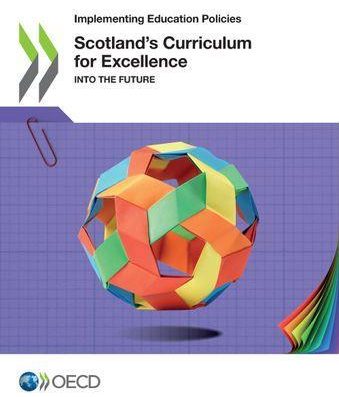A long-awaited review of the Scottish schools curriculum recommends consideration of a shift away from final exams.
The Organisation for Economic Cooperation and Development report on Curriculum for Excellence highlights what was described to it as a ‘clash between 19th century assessment and 21st century curriculum’.
As well as recommending consideration of more continuous classroom assessment for senior pupils it recommends establishment of a new curriculum agency.
Its publication on Monday morning was followed by news that the Scottish Qualifications Authority is to be scrapped and Education Scotland substantially reformed.
But what exactly does the report say and why has it been been published?

Several recommendations were made by the OECD think tank for strengthening CfE and tackling its “ongoing implementation challenges”.
Its report on CfE – the curriculum introduced to Scottish classrooms in 2010 – was commissioned by the Scottish Government early last year.
Publication in February was delayed by the pandemic and the government was criticised for refusal to publish a draft submitted to ministers before the May election.
What is Curriculum for Excellence?
CfE was implemented 11 years ago and its four fundamental capacities are to enable all young people to become: successful learners, confident individuals, responsible citizens and effective contributors.
It aims to help children and young people aged three to 18 gain the knowledge, skills and attributes needed for life in the 21st Century, with a greater emphasis on use or application of knowledge than its acquisition.
With it came new national qualifications – National 3, 4 and 5s replacing Standard Grades and new Highers and Advanced Highers.
What does the report say on assessment?
The OECD found that: “Despite attempts to reform qualifications, misalignment between the aspirations of CfE and the system of qualifications has become a barrier to the implementation of CfE in secondary education.”
It says it may be useful to consider: more portfolio assessment approaches; more emphasis on flexible, formative and continuous assessment components than is currently the case; more use of digital opportunities for feedback; and maintaining (even strengthening) a strong role for teacher judgements with appropriate, manageable and cost-effective moderation.
A separate working paper is to be published at a later date on senior phase assessment and qualifications, expected in August.
But Monday’s report said measures introduced in response to the pandemic could provide the basis for longer-term change.
Specifically, approaches allowing fuller alignment with 21st Century curricula could, it says, include:
- a more central role for continuous teacher assessment during the course, based on classwork and school-based tests
- teacher-set and marked work that is externally moderated by other teachers
- externally marked projects and extended essays
- oral and practical presentations.
The report says: “As evidenced during the Covid-19 pandemic, these approaches also offer greater resilience where there is a major disruption.”
Exams were cancelled this year due to the pandemic, with grades based on teacher judgements and in-class assessments.
What does the report say on the SQA?
The OECD recommends “simplification” of the many education agencies and institutions in Scotland and that “consideration should be given to a specialist stand-alone agency responsible for curriculum (and perhaps assessment) in the future”.
In the short term this agency’s work could include leading the next stage of development of national assessment aligned with CfE. The report also talks of a refreshed inspectorate for school evaluation which is currently the responsibility of Her Majesty’s Inspectorate of Education under Education Scotland
What are the OECD’s key findings and recommendations?
The OECD concludes that CfE continues to be bold and widely supported, and continues to be an inspiring example internationally.
Its complex framework works well for pupils up to age 15 and those doing Advanced Highers but structure, learning practice and assessment approaches need adapting for the senior phase.
Among its recommendations are:
- Re-assess CfE’s aspirational vision against emerging trends in education to take account of evolutions in education and society
- Find a better balance between breadth and depth of learning
- Adapt the senior phase to match the vision of CfE, including considering adapting assessment practices
- Continue building curricular capacity at various levels of the system
- Ensure stable, purposeful and impactful stakeholder involvement, in particular students
- Provide dedicated time to lead, plan and support CfE at the school level, including provision of additional ring-fenced time for teachers
- Simplify policies and institutions for clarity and coherence;
- Align curriculum, qualifications and system.
